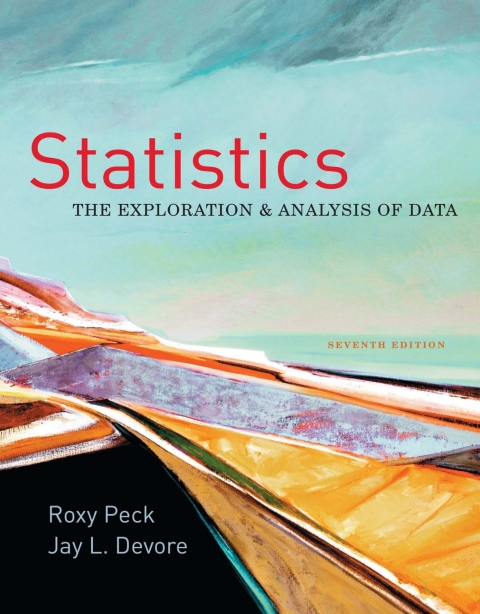The data in the accompanying table is from the paper Gender Differences in Food Selections of Students
Question:
The data in the accompanying table is from the paper “Gender Differences in Food Selections of Students at a Historically Black College and University” (College Student Journal [2009]: 800–806). Suppose that the data resulted from classifying each person in a random sample of 48 male students and each person in a random sample of 91 female students at a particular college according to their response to a question about whether they usually eat three meals a day or rarely eat three meals a day.
Usually Eat 3 Meals a Day Rarely Eat 3 Meals a Day Male 26 22 Female 37 54
a. Is there evidence that the proportions falling into each of the two response categories are not the same for males and females? Use the X2 statistic to test the relevant hypotheses with a significance level of .05.
b. Are your calculations and conclusions from Part (a)
consistent with the accompanying Minitab output?
Expected counts are printed below observed counts Chi-Square contributions are printed below expected counts Usually Rarely Total Male 26 22 48 21.76 26.24 0.828 0.686 Female 37 54 9 41.24 49.76 0.437 0.362 Total 63 76 139 Chi-Sq 2.314, DF 1, P-Value 0.128
c. Because the response variable in this exercise has only two categories (usually and rarely), we could have also answered the question posed in Part
(a) by carrying out a two-sample z test of H0: p1 2 p2 5 0 versus Ha: p1 2 p2 2 0, where p1 is the proportion who usually eat three meals a day for males and p2 is the proportion who usually eat three meals a day for females. Minitab output from the two-sample z test is shown on the next page. Using a significance level of .05, does the two-sample z test lead to the same conclusion as in Part (a)?
Test for Two Proportions Sample X N Sample p Male 26 48 0.541667 Female 37 91 0.406593 Difference 5 p (1) - p (2)
Test for difference 5 0 (vs not 5 0): Z 5 1.53 P-Value 5 0.127
d. How do the P-values from the tests in Parts
(a) and
(c) compare? Does this surprise you? Explain?
Step by Step Answer:

Statistics The Exploration And Analysis Of Data
ISBN: 9781133171744
007th Edition
Authors: Roxy Peck, Ay L Devore






